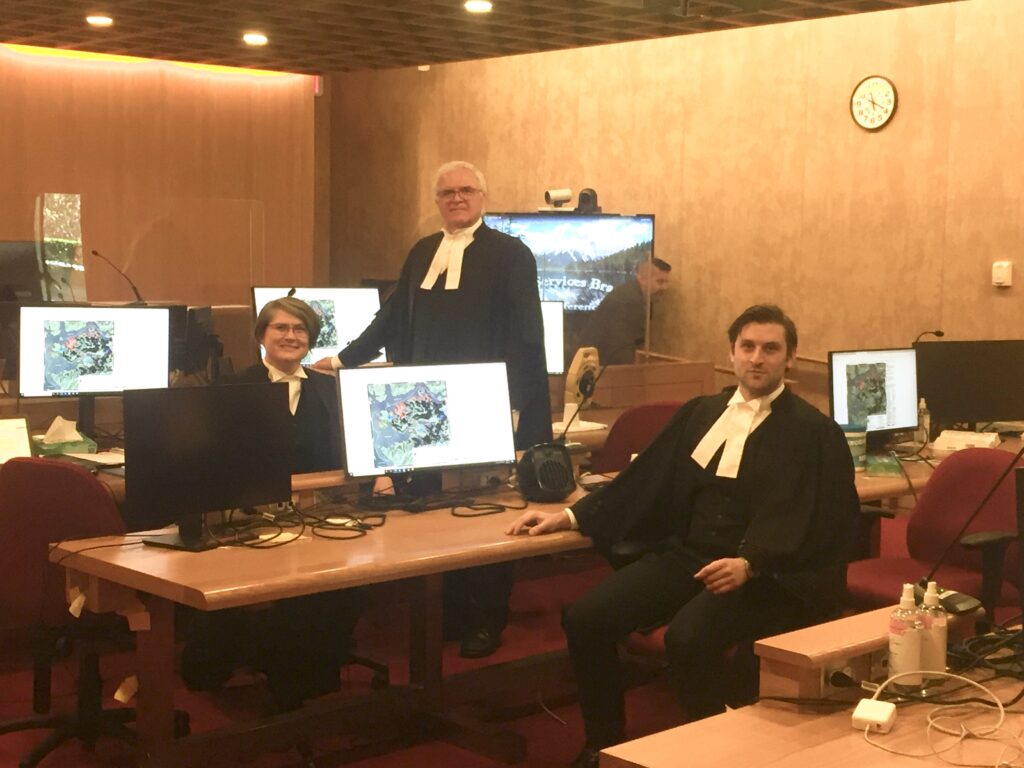CaseLines is in the BC Courts more than you may realize.

Nuchatlaht v. BC successfully used CaseLines in the BC Supreme Court from March-May, 2022, with closing arguments heard September-October, 2022. In court, and in all written submissions, documents and authorities were referenced by their “Bates Numbers” – the letter and number which CaseLines affixes to each individual page. During both direct examination and cross examination of witnesses, Bates numbers sped up the process of confirming a witness (and the court) was looking at the page counsel intended. A Bates number would be named, and the e-trial technician would ensure that particular page appeared on the monitors set before the witness, the judge and all counsel. At the same time, counsel (and the judge) were able to use their own computers to look at either that document and other pages in that document, or to look up other documents that might be relevant to the current line of questioning.
Plaintiffs counsel had made CaseLines available through all pre-trial hearings. All parties agreed to use CaseLines for trial and to use Charest Legal Reporting to manage CaseLines for trial. Parties filed a Consent Order [1] regarding using CaseLines and having remote attendance.
CaseLines was also used in Ding v Prévost, A Division of Volvo Group Canada Inc., 2022 BCSC 215 (CanLII) a motor vehicle collision case before Justice Elliot Myers which involved 65 days of evidence from March to June 2021, and three further weeks of court time from November to December 2021. In his decision Justice Myers writes:
… Given the huge volume of documents and the remote appearances of the witnesses and some counsel, this case could not have been conducted other than with the use of an electronic document management system: no hard copies were necessary. Counsel are to be commended for their collaboration in setting this up.
Ding v Prévost at paragraph 410
Just prior to that, CaseLines was used in another motor vehicle collision case – Sidhu v Hiebert, 2022 BCSC 1024 (CanLII) – heard over 45 days before the Honourable Madam Justice Forth from June – September 2021.
Court Services is to be commended for how it is making adjustments to integrate CaseLines into the BC court system. Spencer Charest at Charest Reporting has been key in ensuring the smooth operation of CaseLines in the above-noted cases.
Why this matters:
CaseLines is in BC Courts. CaseLines – and other e-trial tools – are still being brought before the courts by the parties, but some judges are sending memoranda to parties, requesting they consider programs like CaseLines to handle trials effectively (for example, in the Nuchatlaht case). Remember that in Ontario, the court itself runs CaseLines. Courts in all regions of that province are using the tool, and lawyers in that province gaining experience using the new tools as they advocate for their clients. Canada-wide, Lawyers should be alive to these new tools and be ready to use them.
[1] Consent Order available upon request

